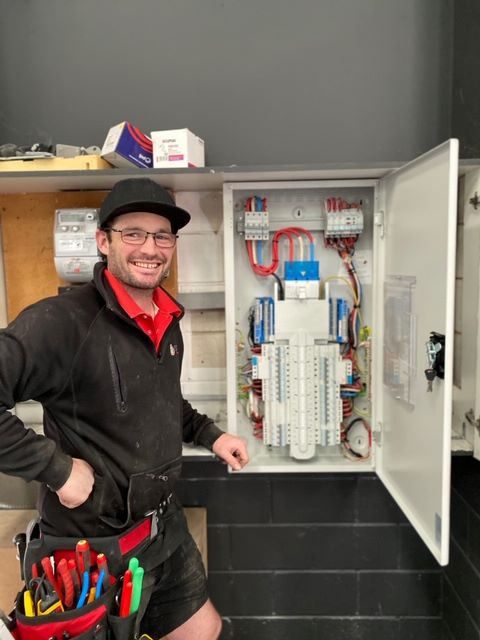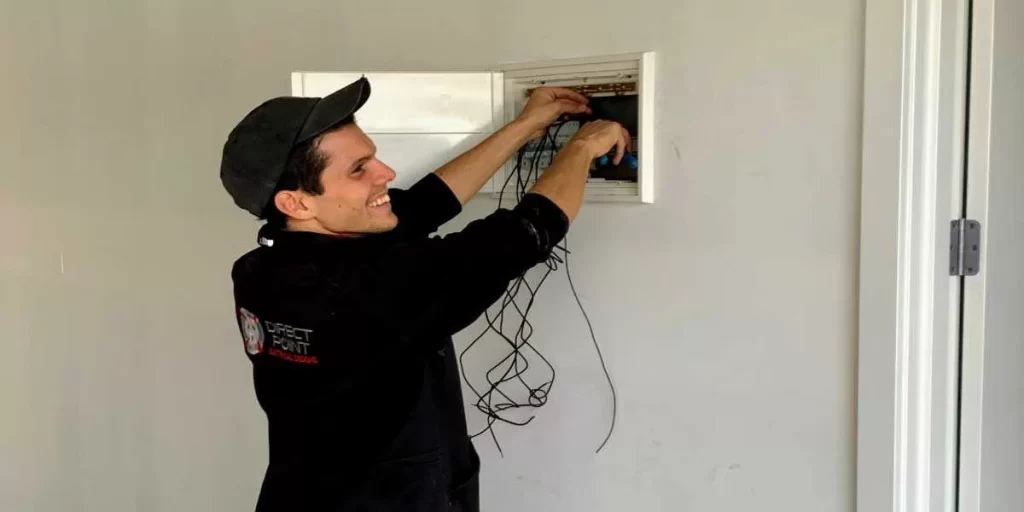When planning electrical installations for your home or commercial space, a common inquiry arises regarding the necessity of a main breaker within a sub panel. This question frequently surfaces as property owners assess their options for enhancing their electrical systems or creating new circuits to meet rising power demands. Gaining a comprehensive understanding of the function and requirements of sub panels is critical for ensuring a safe, effective, and efficient electrical infrastructure.
Typically, a sub panel does not necessitate a main breaker since it draws power from the main panel, which is already equipped with a main breaker that regulates the overall power supply. The breaker in the main panel serves as the primary disconnect for the entire electrical system, encompassing all sub panels. However, certain local electrical codes or specific installation scenarios might require the inclusion of a main breaker in sub panels, particularly for added safety or operational convenience. It’s advisable to consult local regulations to guarantee compliance and safety.
Even though a main breaker is not a standard necessity, incorporating one into your sub panel can provide numerous advantages. It allows for a quick and easy method to cut off power to all circuits within that particular panel without disrupting the entire electrical system. This feature is particularly beneficial during maintenance tasks or emergencies, as it permits safe isolation of various segments of your property’s electrical network, thereby enhancing safety and accessibility during such instances.

Explore the Critical Roles and Advantages of Sub Panels in Electrical Systems
Sub panels are integral components of electrical systems, facilitating effective power distribution to specific areas or appliances within a building. They significantly improve the management and organization of circuits while augmenting the overall capacity to handle electrical loads. By strategically positioning sub panels, property owners can optimize their electrical infrastructure to efficiently meet the diverse demands of various appliances and equipment.
Delving into Sub Panels: Understanding Their Essential Functions and Advantages
A sub panel, commonly referred to as a subsidiary panel or distribution board, functions as an additional electrical panel that branches off from the primary electrical panel. Its main goal is to act as a secondary distribution point for electricity throughout a structure, enhancing flexibility and improving efficiency. Sub panels are generally installed to achieve:
- Increase circuit capacity for a diverse array of applications and devices.
- Isolate power supply to specific areas or appliances for enhanced safety and convenience.
- Improve the organization and management of the overall electrical system.
Common placements for sub panels include garages, workshops, or larger residences where the main panel may be located far from certain areas that require power. Through the installation of sub panels, property owners can attain more efficient power distribution, simplifying circuit management and making it easier to control and access their electrical infrastructure.
Crucial Factors to Consider for Electrical Load Assessment Prior to Sub Panel Installation
Before initiating a sub panel installation, it is vital to thoroughly assess the electrical load requirements. Key elements to consider include:
- The overall amperage needed for the designated area or equipment.
- The quantity and types of circuits necessary for particular applications.
- The distance from the main panel to the selected sub panel location.
Calculating the expected load is essential to ensure that the sub panel can safely manage it. Generally, sub panels come in capacities ranging from 60 to 200 amps, depending on their intended purpose. It is crucial to align the sub panel’s capacity with your specific electrical requirements to maintain both efficiency and safety. Additionally, factoring in potential future expansions when sizing your sub panel can save time and costs, helping to avoid the need for upgrades or replacements as your electrical demands evolve.

Essential Factors to Ensure Safe and Effective Sub Panel Installation Process
To ensure a secure and efficient installation of a sub panel, several critical considerations must be addressed, including circuit breakers, adherence to regulatory standards, and the implementation of necessary safety measures. Understanding these installation requirements is crucial for establishing a safe and compliant electrical system.
Evaluating the Need for Circuit Breakers in Sub Panels
While sub panels do not always require a main breaker, the necessity can vary based on specific situations, such as:
- The distance from the main panel: A local disconnect may be essential if the sub panel is positioned far from the main panel.
- The number of circuits: Sub panels equipped with more than six breakers typically require a main breaker to enhance safety.
- Local codes: Certain jurisdictions mandate the installation of main breakers in all sub panels.
A main lug sub panel depends on the main breaker from the main panel for overcurrent protection, which is a common configuration when the sub panel is situated in close proximity to the main electrical panel. Being aware of the specific requirements for your installation is critical for ensuring compliance and safety.
Understanding Regulatory Standards Governing Sub Panel Installations
In Australia, specific electrical standards regulate the installation of sub panels, including:
- AS/NZS 3000: This standard outlines the comprehensive requirements for all electrical installations.
- Maximum rating: Main breakers for sub panels must not surpass the ampacity of the feeder conductors to guarantee safe operation.
- Labelling: Clear identification of the power source for the sub panel is mandated.
Adhering to these standards is essential for ensuring safety and legal operation. It is highly advisable to consult local authorities for specific regional requirements. Furthermore, remember that all electrical work must be performed by a licensed electrician to ensure compliance and safety!

Establishing Critical Safety Measures for Sub Panel Installations
Implementing robust safety measures during sub panel installations is vital to mitigate electrical risks and ensure operational safety:
- Proper grounding: Ensure that the sub panel is effectively grounded to minimize the risk of electrical shocks.
- Adequate spacing: Maintain sufficient clearance around the panel to facilitate easy access and adequate ventilation.
- Weatherproofing: For installations located outdoors, utilize weather-resistant enclosures to protect against moisture and environmental factors.
Additionally, it is imperative to use the correct wire sizes and types tailored to the expected load. Installing arc fault circuit interrupters (AFCIs) and ground fault circuit interrupters (GFCIs) per code requirements is also crucial for safety. Regular inspections and maintenance of the electrical installation significantly contribute to ongoing safety and compliance. Always engage a licensed electrician for sub panel installations to ensure that all safety standards are rigorously adhered to.
Common Inquiries Regarding Sub Panels and Main Breakers Addressed
The complexities surrounding sub panels, including considerations about breakers, sizing, and regulations, can be overwhelming for property owners. Attaining a clear understanding of the essential requirements is crucial for ensuring a safe and compliant electrical setup that meets all local codes and safety standards.
Is a Main Breaker Required for a Sub Panel Installation?
A sub panel does not necessarily require a main breaker. The requirement largely depends on its location relative to the main panel and local electrical codes. In instances where the sub panel is housed within the same building as the main panel, a main breaker is typically not mandated.
However, if the sub panel is situated in a separate structure, it usually must incorporate a main breaker for safety and compliance reasons, ensuring that all electrical installations adhere to local regulations.
Can a Main Breaker Panel Function as a Sub Panel?
Yes, a main breaker panel can indeed operate as a sub panel, although it may not always be the most efficient option. In this scenario, the main breaker would act as an additional disconnect point rather than serving as the primary disconnect for the overall electrical system.
Choosing a panel specifically designed as a sub panel is often more cost-effective and space-efficient, providing improved functionality for your electrical needs.
What Breaker Size is Appropriate for a 100 Ampere Sub Panel?
For a 100 ampere sub panel, it is standard practice to utilize a 100 ampere breaker in the main panel to supply it. This breaker should align with the sub panel’s rating to guarantee optimal protection and functionality, ensuring a reliable power supply.
Moreover, the wire size must also be appropriate for handling a 100 ampere load, ensuring that the entire electrical system operates safely and effectively.
What Regulations Govern Electrical Sub Panels?
Regulations concerning electrical sub panels can vary by region, but they primarily focus on safety and accessibility. Key regulations generally include:
- Proper grounding and bonding procedures to enhance safety.
- Correct wire sizing to effectively accommodate anticipated loads.
- Adequate spacing around the panel to ensure accessibility and safety.
- Clear labelling of all circuits within the panel for improved management.
Always refer to local codes and consider professional installation to ensure full compliance with all regulations, thereby creating a safe electrical environment.
What is the Capacity Limit for a Sub Panel Connected to a 200 Ampere Main Panel?
A sub panel connected to a 200 ampere main panel does not come with a fixed capacity limitation. The size of the sub panel is contingent on several factors, including:
- The available capacity in the main panel to support additional loads.
- The intended load requirements for the sub panel based on its usage.
- The wire size utilized between the panels, ensuring it can handle the load safely.
It is certainly feasible to install a 100 or 150 ampere sub panel, provided that the main panel possesses sufficient spare capacity to support it, offering flexibility for future electrical needs.
How Can One Accurately Size a Breaker for a New Sub Panel Installation?
To effectively size a breaker for a new sub panel, follow these steps:
- Calculate the total load expected for the sub panel, considering all connected devices.
- Select a panel that is rated for that load or higher to ensure safety.
- Choose a breaker in the main panel that aligns with the sub panel’s rating for optimal performance.
It is advisable to consider future expansion needs when sizing the panel. Often, installing a slightly larger panel than currently required can provide additional flexibility for accommodating future electrical demands, making your system more adaptable.
The Article: Does a Main Breaker Need to Be in a Sub Panel? first appeared on https://writebuff.com
The Article Main Breaker Requirements for Sub Panels Explained Was Found On https://limitsofstrategy.com
Comments
2 responses to “Sub Panel Main Breaker Requirements Explained”
Your insights into the necessity of a main breaker in sub panels certainly shed light on a topic that many homeowners often overlook. It’s intriguing to consider how the nuances of electrical systems not only impact safety but also have broader implications for energy management and efficiency, which are becoming increasingly critical as our dependence on electricity grows.
Your exploration of the role of main breakers in sub panels is fascinating and resonates deeply with the complexities of home and commercial electrical systems. It’s interesting to consider how something as seemingly straightforward as a breaker can lead to nuanced discussions about safety, efficiency, and compliance with local codes.